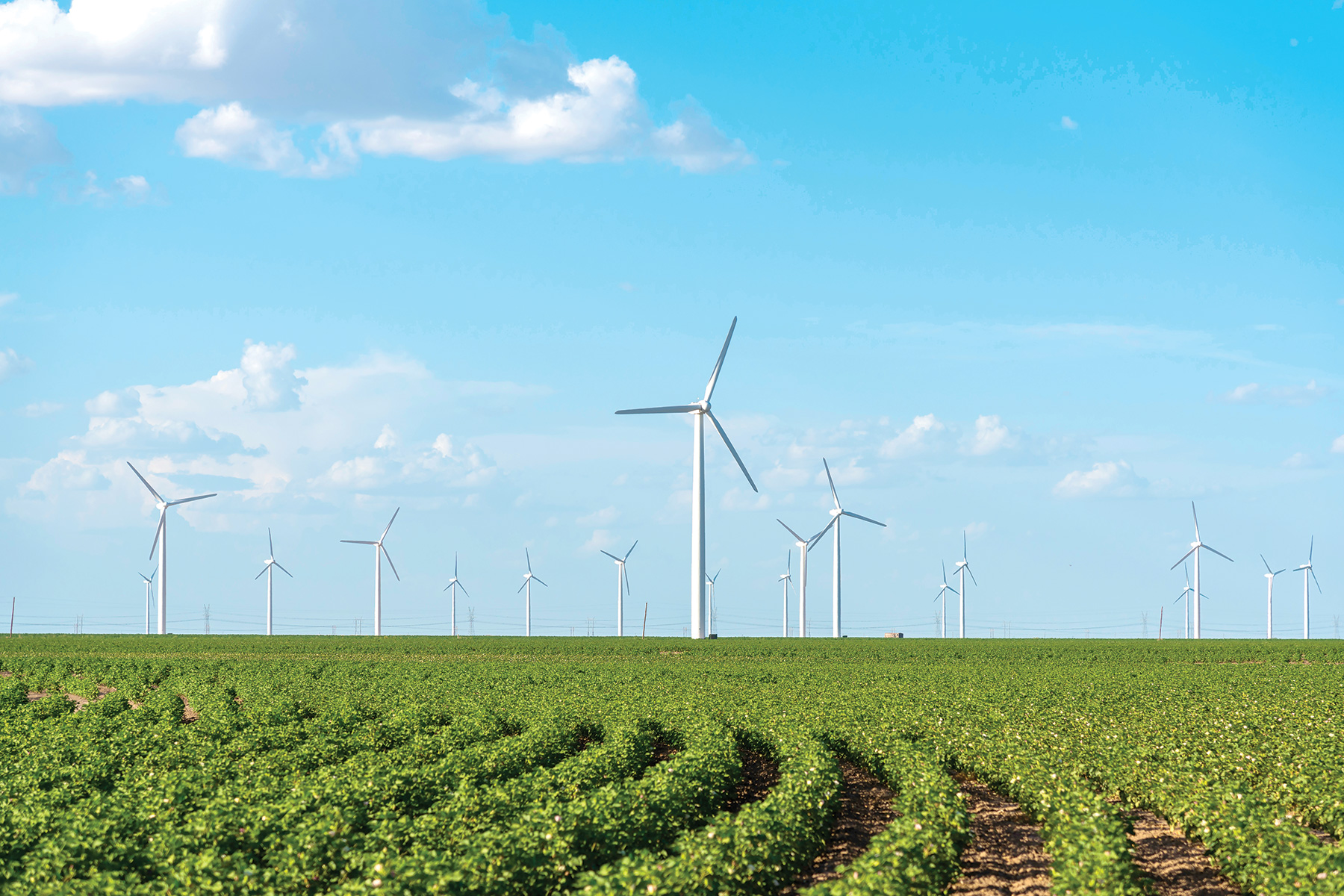Wind power has been on a tear in Texas. It’s difficult to argue with that conclusion considering that in mid-November, on a day of steady breezes in West Texas and the Panhandle, wind generation made up more than 40 percent of power produced on the state’s grid. The average across the year was roughly 17 percent, up from less than 1 percent in 2002.
Renewable energy sources, the vast majority of which was wind power, lowered wholesale prices for energy on the Electric Reliability Council of Texas grid by $855 million in 2017, according to an industry-backed study by the consulting firms TXP and IdeaSmiths. The benefits have been spread statewide, with costs to consumers lowered by 3 to 8 percent between 2010 and 2017.
Texas produces more wind energy than Iowa, Oklahoma, and California combined. Because its fuel costs nothing and wind technology has steadily advanced, wind energy has become the cheapest form of electric power on the Texas grid, when costs are calculated over the life of the generating station.
Companies such as General Motors, which announced in October that its Arlington assembly plant now operates on 100 percent wind energy, say they expect to save millions of dollars by sourcing wind power through long-term contracts.
So how did fossil fuel-rich Texas become a leader in clean, renewable wind energy? Through a pragmatic mix of free-market and government-led policies.
David Spence, a professor of law and business at the University of Texas, says no state makes it easier than Texas to set up a wind farm. “It’s the lowest barrier to entry in the country. There’s just a registration requirement, not even a permit,” he says. Deregulation has also spurred the industry “by allowing entrepreneurs to go build these farms knowing they could find customers.”
Spence says credit is often given to a state law, signed by then-Gov. George W. Bush, mandating a certain amount of renewable energy be included in the generation mix as part of deregulation. “The state exceeded that almost immediately so it’s difficult to say it had much effect,” Spence says.
More important, he maintains, was the decision by then-Gov. Rick Perry and the state legislature to approve a 3,600-mile network of transmission lines stretching from West Texas to the state’s population centers, including Dallas-Fort Worth. Its $7 billion cost was “socialized” by spreading it across the state’s electric ratepayers.
Even as federal subsidies are being phased out–on a schedule that will eliminate them in 2020–a November 2018 report by the financial firm Lazard concludes that unsubsidized onshore wind energy will remain the lowest-cost form of electric generation.
Spence says wind and solar energy combined make up almost a third of the generating capacity on the Texas grid, and as that penetration increases, new debates will begin.
Because renewables need to be backed up when the wind doesn’t blow and the sun doesn’t shine, traditional gas, coal and nuclear plants need to be maintained, he explains. How those will remain profitable or be sustained when they are evermore frequently sidelined for cheaper options becomes a major policy issue if the growth of wind and solar continues apace.
Another interesting question is whether greenhouse gas emissions will enter Texas’ decisions about wind and solar. To date, the wind industry has touted low costs for ratepayers, benefits to landowners, and jobs and development in the state’s rural areas.
Under the heading “Improving Human Health and the Environment” the TXP/IdeaSmiths report issued this fall discusses the advantages of renewables in terms of the amount of water saved and not used in traditional power plants. Conspicuously absent are the words “emissions,” “global warming,” and “CO2.”
“Because of the partisan divide on climate change, they just avoid it,” says Spence. Someday perhaps that will change.
Thomas Korosec is an award-winning journalist who specializes in legal and business topics.







